
Cascade Creek restoration project
Banff National Park
Winding through the heart of Banff National Park is Cascade Creek, a small stream at the centre of a massive restoration project spanning the better part of a decade. Bringing this steam back to its former glory has been an on-going collaboration between Parks Canada, Trans-Alta, the Town of Banff, and the Department of Fisheries and Oceans. Restoring Cascade Creek is one step in restoring native fish populations in Banff’s aquatic ecosystems.
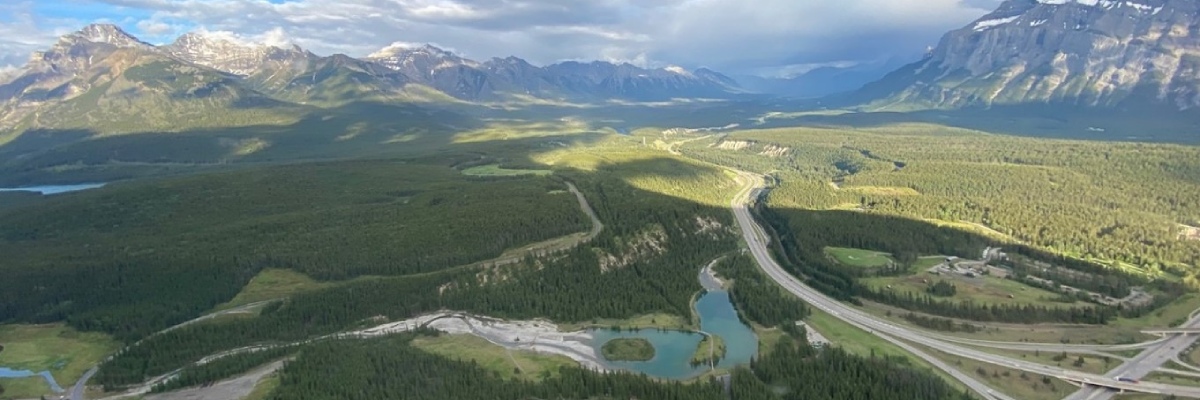
Little stream, big mission
Once part of the Cascade River, Cascade Creek was created when the lower 9-km section of the Cascade River was reduced to a trickle by the Lake Minnewanka Dam in 1941. This drastic reduction in flow completely changed the aquatic ecosystem downstream. The newly formed Cascade Creek had dried up halfway towards where it used to connect to the Bow River. Because of the decrease in waterflow, fine river sediment began to accumulate. As a result, the sediment coated the once rocky streambed, making it impossible for native trout species like westslope cutthroat trout, and bull trout, to spawn in the now mucky streambed.
Getting back on track
Sometimes even the best of intentions can have lasting impacts on the environment. Invasive non-native fish populations were already established in Cascade Creek by human intervention before the damming of Lake Minnewanka in 1941. Fishing stocking was once part of Banff National Park’s history, but stocking practices had concluded after the construction of the dam.
With the unnatural sediment build-up in the riverbed, native fish populations began struggling due to increasing habitat loss, exacerbated by competition with non-native fish species within the national park. Cut off from the clean, cold, and connected waters of the Bow and Cascade Rivers that the native trout once relied on, they were slowly pushed out of their home by the non-native brook trout, a char that thrives in sediment rich waters.
The effects of the dam were plain to see for observing scientists, but restoration efforts still faced many barriers. While the fine sediment muddying the waters could be removed with higher water flow, increasing river flow back to historical levels was simply not possible. The way forward was as murky as the waters of Cascade Creek…
Nature always finds a way
In its 2010 Banff Park Management Plan, Parks Canada turned its focus to looking at ways to improve the ecological integrity of Cascade Creek through aquatic restoration. Work began to carefully rehabilitate the waterway, but in 2013 Mother Nature intervened and gave this restoration work a jump start! During a historic flood in Southern Alberta, to prevent the Lake Minnewanka dam from flooding, the spillway of the dam was opened for the very first time, sending lake water crashing down the Cascade Creek channel. This powerful torrent ripped through the channel, sweeping away the fine sediment clogging Cascade Creek’s waters!
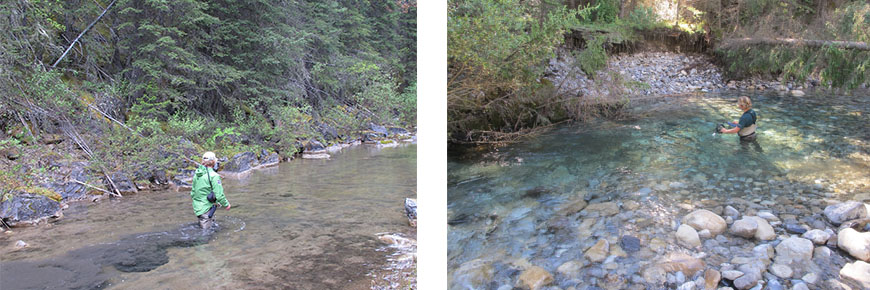
While destructive to the stream channel itself, this was a catalyzing event for the restoration of Cascade Creek. After the flood, the previous undersized water culverts were replaced with larger, fish-passable ones. Through working with project partners, the dam infrastructure was upgraded to allow it to release slightly higher flows into the creek. The increased flows and restoration efforts allowed the groundwater aquifer to recharge and reconnected Cascade Creek to the Bow River!
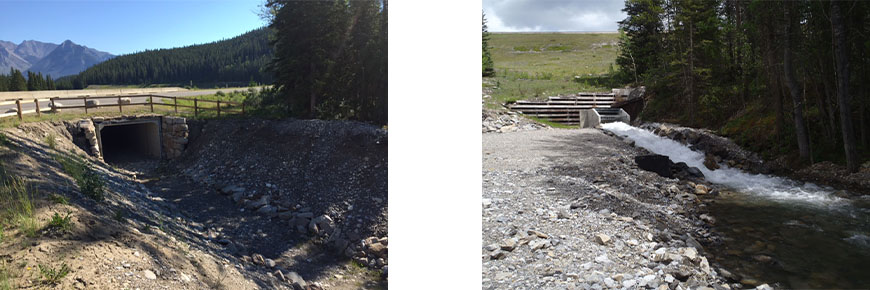
Rebuilding a home for westslope cutthroat trout in Cascade Creek
With the major restoration obstacles carried away by floodwaters, Parks Canada jumped into action. The goal: restoring the stream channel of Cascade Creek and returning native westslope cutthroat trout back to its waters. The renowned stream restoration expert, Dr. Bob Newbury, was brought onboard to design a channel, complete with riffles, pools, and rocky runs to support all life stages of westslope cutthroat trout. An excavator was used to restore the channel to Dr. Newbury's design specifications. A total of three boulder runs and 14 riffle-pool sequences were constructed across a 4-km portion of Cascade Creek.
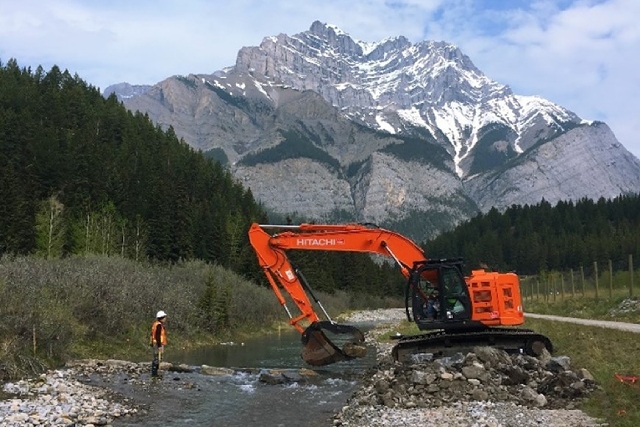
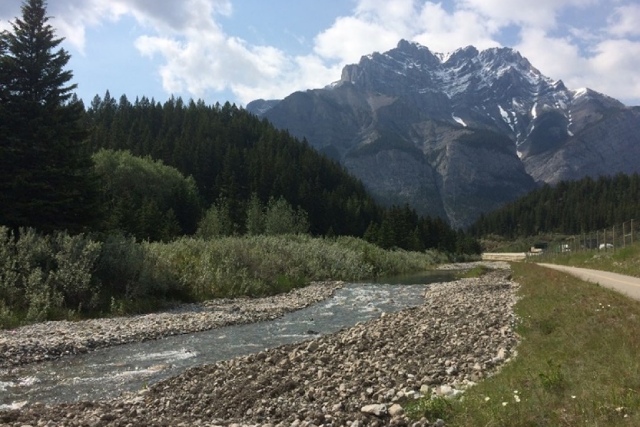
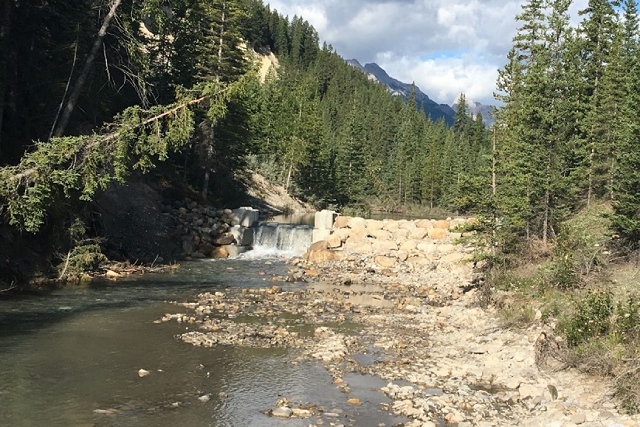
Now, pools and riffles will provide trout with a variety of habitat types, giving them places to feed, rest, and lay eggs. Boulders placed along the channel create structure and a place for westslope cutthroat trout to hide from predators. By re-grading the creek bed and increasing flows, the water of Cascade Creek flows cold and connected. As a final touch, a steep drop was constructed at the downstream end of the stream to prevent non-native fish from swimming upstream and invading this newly restored habitat.
The “home inspection”
Before westslope cutthroat trout can be reintroduced to their freshly renovated home, Parks Canada needs to make sure that the ecosystem in Cascade Creek is “up to code” and able to support them long term.
Here are some of the ways Parks Canada scientists have set up the westslope cutthroat trout for success in their newly restored habitat:
- Removing invasive brook trout from Cascade Creek through electrofishing. This was followed by snorkel surveys and continued electrofishing to make sure the non-native brook trout were completely removed.
- Monitoring benthic invertebrates (the tiny organisms that live in the cobbles at the bottom of rivers), can tell us a lot about the health of a waterbody. Since westslope cutthroat trout eat insects, finding a healthy invertebrate population in Cascade Creek let us know they will have plenty of food and that the creek is in good shape.
- Water quality is important when you’re a fish! Water testing showed the water chemistry within the creek was suitable for the reintroduction of native fish. Continuing monitoring lets Parks Canada watch for potential issues for stream health.
- Stream health goes deep… deep underground! The relationship between the surface water of the creek and the groundwater wells is reciprocal, water moves between them in an intricate cycle. We found that relationship is running smoothly in Cascade Creek, groundwater feeds the creek in some areas while allowing it to drain in others. This helps to regulate stream temperature and maintain connectivity in low-flow conditions.
- Monitoring stream temperature throughout the creek, makes sure it’s suitable for westslope cutthroat trout throughout their life cycle, such as optimal temperature for spawning and a long enough growing season for young trout. The water temperature in Cascade Creek meets their needs with some room left to accommodate fluctuations in summer stream temperatures associated with climate change.
- Habitat complexity (the level of interaction between the trout and their new environment) is determined by many factors. Each one was checked, to make sure everything is just right for the westslope cutthroat trout in Cascade Creek.
- Flow rate is one of the last pieces of the home inspection. Enough water needs to be flowing through the creek to keep fine sediment moving. Parks Canada has been collecting data to see how sediment is transported along the creek. While the current cold-water flow can meet the needs of westslope cutthroat trout, continued monitoring and flow analysis will show if any adjustments are needed once they have been reintroduced. Having trout in the stream will allow the scientists to see how the trout respond to flow manipulations and adjust based on how the fish population is doing.
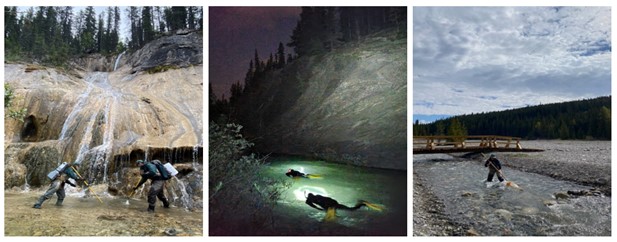
Planting the seeds for a healthy creek
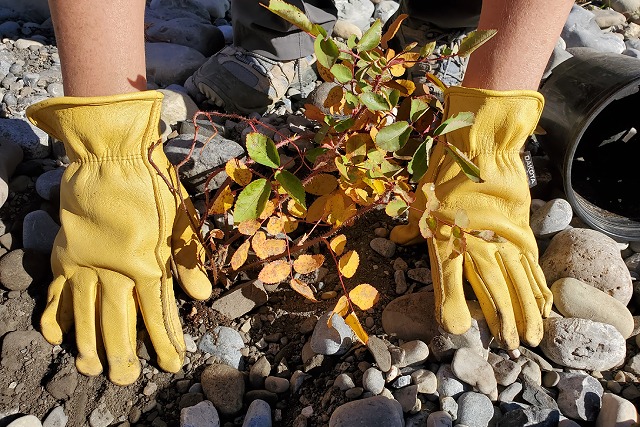
Riparian restoration is an ongoing effort after the 2013 flood devastated the stream banks. The stream banks are being planted with native shrubs, trees, grasses and other flowering plants to provide additional cover for fish, stabilize the newly constructed banks, and help to regulate stream temperature. The efforts of Parks Canada aquatic specialists and passionate volunteers have made amazing progress removing non-native vegetation and planting native species to cultivate a healthy riparian zone in the coming years!
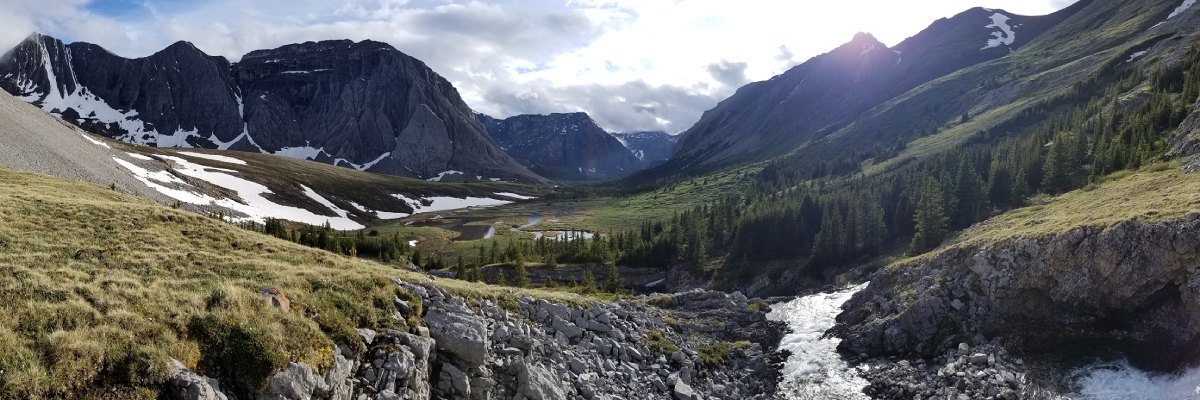
Sourcing westslope cutthroat trout for Cascade Creek
The next challenge in returning westslope cutthroat trout back to Cascade Creek was figuring out where to get them from! Westslope cutthroat trout in this region have evolved over thousands of years to be perfectly adapted to the harsh conditions of their mountain home. However, previous stocking practices in the park have led to hybridization with other trout species, leading to the significant loss of genetically-pure westslope cutthroat trout in Banff National Park.
To find suitable candidate populations for restoring a healthy population in Cascade Creek, Parks Canada tested fish at a genetic level. But how do you conduct a genetic test on a fish? To test fish for genetics, a small tissue sample was taken from the anal fin and sent to a state-of-the-art trout genetics lab at the University of Montana. This genetic testing allowed us to confirm that the westslope cutthroat trout population being placed in the creek are genetically-pure and have an ancestral match to the Upper Bow River, which will ensure this population is adaptable to the conditions found in Cascade Creek.
From this analysis, Parks Canada landed on two donor populations that meet the genetic criteria:
- Upper Stoney Creek
- Marvel Lake
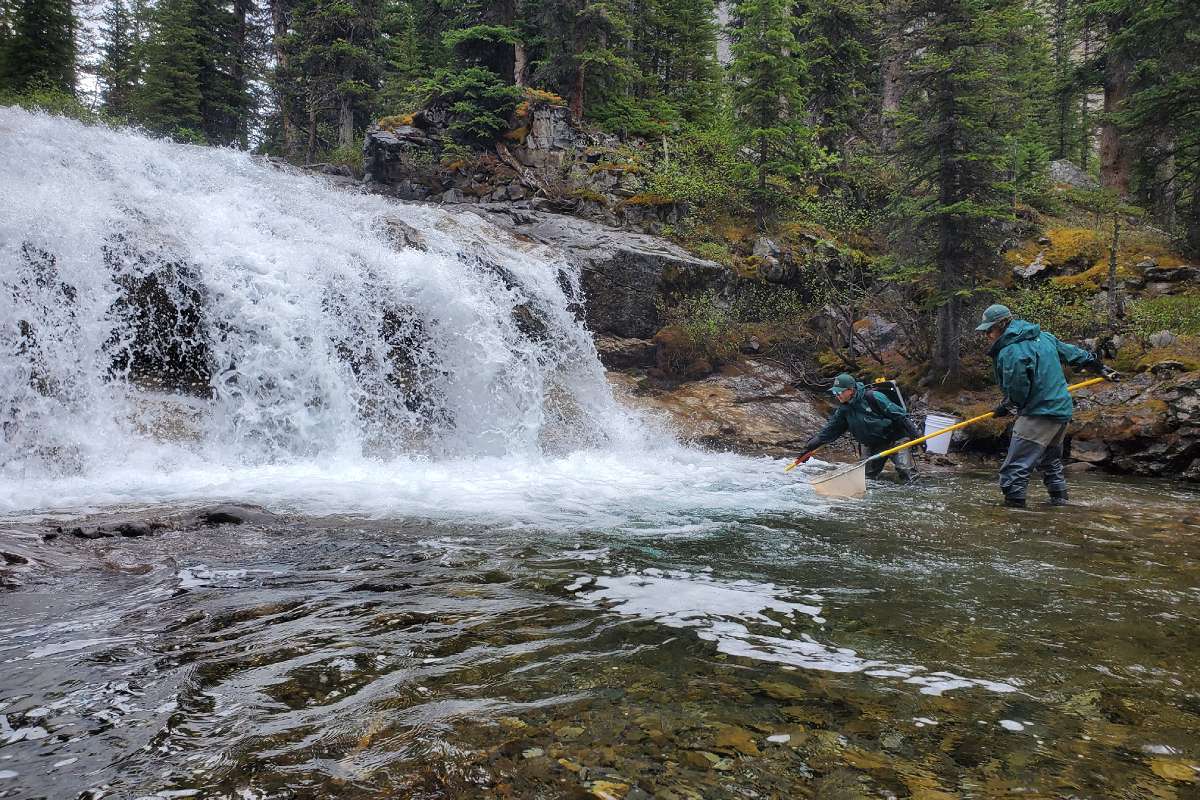
Parks Canada aquatic specialists also tested these two populations for high-risk pathogens to prevent carrying fish-borne diseases to new waterbodies. This also gives the fish the highest chance of survival when they are relocated to Cascade Creek. Samples were sent all the way to the University of Prince Edward Island fish pathology lab for careful analysis. Both populations were found to be free from all concerning pathogens, including the whirling disease parasitic agent – Myxobolus cerabralis.
After finding that these populations are disease-free, and genetically suitable fish with the local genetics to the upper Bow River basin, it is now time to move forward with the reintroduction into Cascade Creek!
So, what’s next for the Cascade Creek restoration project?
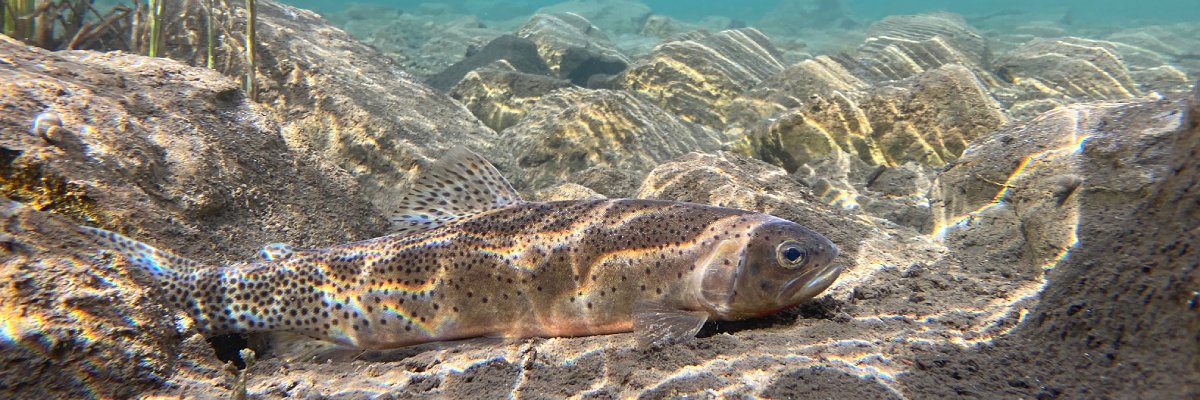
A special delivery for Cascade Creek
To bring westslope cutthroat trout back to Cascade Creek, Parks Canada will be collecting gametes (eggs and milt) from fish in the genetically tested donor populations. To ensure the best chance of survival of the newly introduced fish population, Parks Canada will be taking a three-year reintroduction approach. During the three-year reintroduction, gametes will be taken from the Marvel Lake population in the first and third year, and from the Stoney Creek population in the second year. Parks Canada aquatic specialists may be in the field starting this scientific work as early as Spring 2024!
Want to be a part of the native trout reintroduction project?
- Follow us on Facebook at Banff National Park for updates on the project and to follow along as work progresses!
- To get involved, reach out to benevolebanff-banffvolunteer@pc.gc.ca to ask about volunteer opportunities for this project like riparian restoration and streamside garbage cleanup events.
While fixing up Cascade Creek, Parks Canada has also been working on restoring the westslope cutthroat populations throughout Banff National Park. Keep reading to find out how Parks Canada is working on bringing back westslope cutthroat trout, and other aquatic restoration projects!
For more information:
Dan Struthers | Project Manager
dan.struthers@pc.gc.ca
- Date modified :